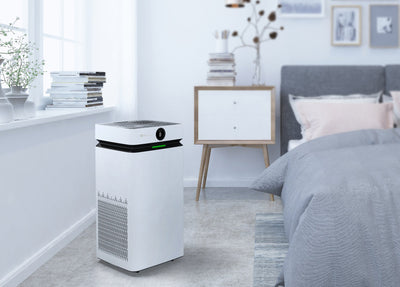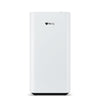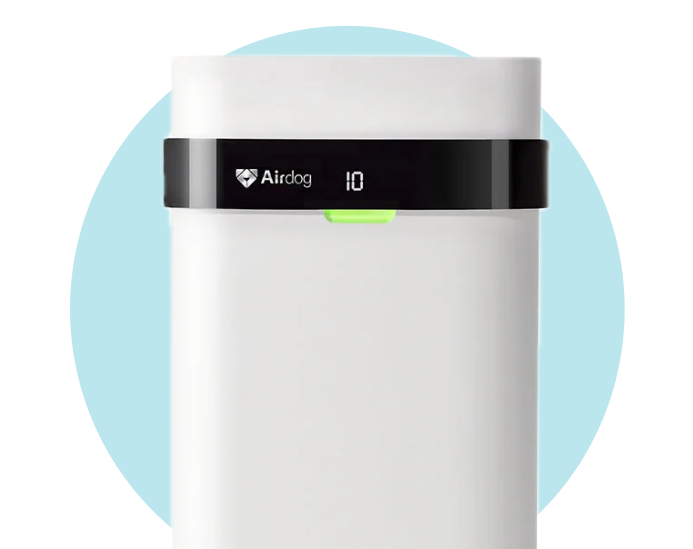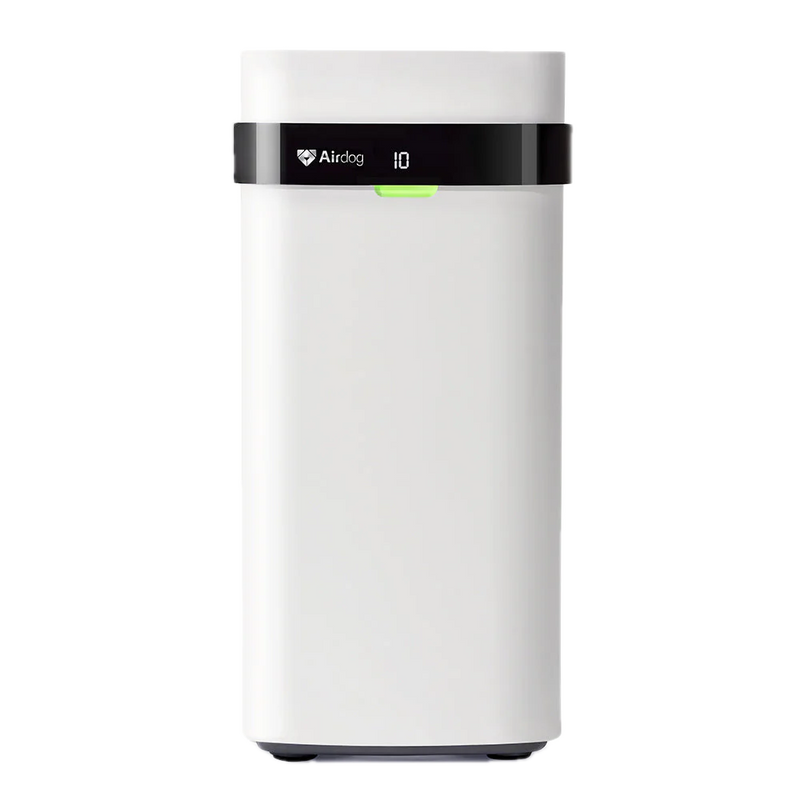An air purifier is one of the best investments you can make for your home to ensure cleaner, healthier air. However, placing the unit in the right location is crucial to reap the benefits of effective air purification. Proper air purifier placement enhances air circulation, removes airborne particles, and delivers fresh air where you need it most.
This comprehensive guide will cover where to put an air purifier, areas to avoid, and tips for maintaining optimal performance. With these strategies, you’ll ensure the best air quality for you and your family.
Why Placement Is Key to Air Purifier Effectiveness
The placement of your air purifier directly impacts its ability to clean the air effectively. It can quickly and efficiently filter airborne pollutants such as dust, pollen, mold spores, and pet dander when placed correctly. Here’s why placement matters:
- Improved Air Circulation: Air purifiers require unobstructed airflow to pull in untreated air and release filtered air back into the room.
- Targeted Air Purification: Strategically placing the unit near pollutant sources ensures airborne particles are captured before they spread.
- Enhanced Comfort: Proper placement can deliver purified air where you spend the most time, such as your sleeping area or living room.
Best Places to Put an Air Purifier
1. Central Location for Maximum Coverage
Placing an air purifier in a central location ensures it can circulate air effectively throughout the room. The device should have enough space around it to draw in and release air without obstructions.
- Recommended Placement: At least 2–3 feet away from walls or furniture to prevent blocked air intake.
- Ideal Rooms: Living rooms, dining areas, or open-plan spaces where family members gather.
2. Bedrooms: Near Your Breathing Zone
The bedroom is a priority for air purification because you spend the most time sleeping and rejuvenating. Breathing clean, filtered air at night can improve sleep quality and overall health.
- Optimal Placement: Place the air purifier near your bed, ideally at a height that can target the breathing zone—about 3–5 feet off the ground. Avoid placing it directly on the floor, as this may reduce its ability to circulate air effectively.
For allergy sufferers, bedroom air purifiers with HEPA or activated carbon filters are particularly beneficial. These filters significantly reduce allergens, odors, and airborne pollutants.
3. Living Room: Central and Open Area
Living rooms often accumulate airborne particles from furniture, carpets, and pet dander.
- Best Spot: Place the air purifier in a central, open area to capture pollutants from all directions. Avoid tight spaces where airflow might be restricted.
4. Kitchen: Combat Odors and Airborne Pollutants
Kitchens are hotspots for smoke, grease, and cooking odors. An air purifier can help eliminate these pollutants and maintain clean air.
- Placement Tips: Position the air purifier near the cooking area but away from direct heat sources like stoves or ovens. This prevents overheating and ensures the unit functions safely.
5. Entryways and High-Traffic Areas
High-traffic areas, such as hallways and entryways, often introduce outdoor pollutants like pollen, dust, and pet dander into your home.
- Effective Location: Place an air purifier close to the entry point to capture pollutants before they spread to other rooms.
Placement Tips for Specific Needs
For Small Rooms
To maximize coverage, place the air purifier in a central location in smaller spaces, such as home offices or nurseries. Ensure that the intake and exhaust areas remain clear of obstacles for proper airflow.
For Multi-Room Homes
If you have multiple air purifiers, position them strategically across different rooms to cover your entire living space. Leaving doors slightly open allows air to circulate between rooms and ensures purified air reaches other areas.
For High high-humidity areas
Air purifiers can help reduce airborne mold spores in rooms prone to high humidity, such as basements or bathrooms. For optimal performance, pair the purifier with a dehumidifier.
Areas to Avoid When Placing an Air Purifier
While knowing where to put an air purifier is essential, it’s equally important to avoid problematic locations that can hinder its effectiveness.
- Corners or Tight Spaces: Placing the air purifier in a corner restricts airflow and creates dead zones of untreated air.
- Behind Furniture: Blocking the intake or exhaust areas reduces the purifier’s ability to circulate air effectively.
- Near Heat Sources: To prevent overheating, avoid placing the unit near radiators, ovens, or other heat-generating appliances.
- Near Electronics: Keep the purifier away from TVs, computers, or other devices that might interfere with its operation.
Enhancing Performance: Practical Tips
1. Regular Filter Maintenance
Filters are the heart of any air purifier. Over time, they accumulate pollutants and must be cleaned or replaced to maintain optimal performance.
- HEPA and Activated Carbon Filters: Replace these filters every 3–6 months or as the manufacturer recommends.
- Airdog TPA Washable Filters: These reusable filters can be washed regularly, making them a cost-effective and eco-friendly option.
2. Keep Windows Closed
For the air purifier to work effectively, keep windows closed to prevent untreated air from entering the room.
- Fresh Air Strategy: If you prefer slightly open windows for ventilation, ensure the air purifier is placed nearby to clean incoming air.
3. Match Room Size to Unit Capacity
Air purifiers have a specific clean air delivery rate (CADR) and room size recommendation. Ensure that your purifier matches the size of the room for maximum efficiency.
- Large Rooms: Consider air purifiers designed for high-capacity air circulation for larger spaces.
- Small Rooms: Compact units are ideal for smaller rooms and offer targeted air purification.
Benefits of Proper Air Purifier Placement
When you correctly place an air purifier, the benefits extend beyond cleaner air.
- Significantly Reduce Allergens: Proper placement helps remove pollen, pet dander, and dust mites, benefiting allergy sufferers.
- Eliminate Odors: Activated carbon filters in air purifiers are particularly effective in removing odors from pets, smoke, or cooking.
- Combat Airborne Pollutants: Strategic placement ensures that airborne particles such as mold spores and bacteria are captured promptly.
- Improve Sleep Quality: Placing the purifier near your sleeping area can enhance rest by reducing nighttime irritants.
Airdog Air Purifiers: Revolutionizing Air Quality
Not all air purifiers are created equal. Airdog’s innovative TPA® technology sets it apart by offering superior air purification. Unlike traditional filters, Airdog purifiers actively destroy airborne pollutants, ensuring the delivery of truly clean and fresh air.
Features of Airdog Air Purifiers
- Advanced Filtration: Airdog’s multi-step filtration captures and eliminates airborne particles, odors, and harmful pollutants.
- Washable Filters: Reusable filters save money and reduce waste.
- High Efficiency: Designed for optimal air circulation and effective air purification, Airdog units deliver unparalleled performance.
Conclusion
Choosing the best place to put your air purifier is crucial for ensuring its effectiveness and improving indoor air quality. You can enjoy cleaner, healthier air throughout your home by placing it in central locations, near pollutant sources, or in high-traffic areas.
Follow the manufacturer’s recommendations, maintain your filters, and avoid placement mistakes for best results. With the right air purifier and proper placement, you’ll create a sanctuary of purified air and a healthier living environment.
Discover how Airdog can transform your home with cutting-edge air purification technology. Visit Airdog USA to learn more.






